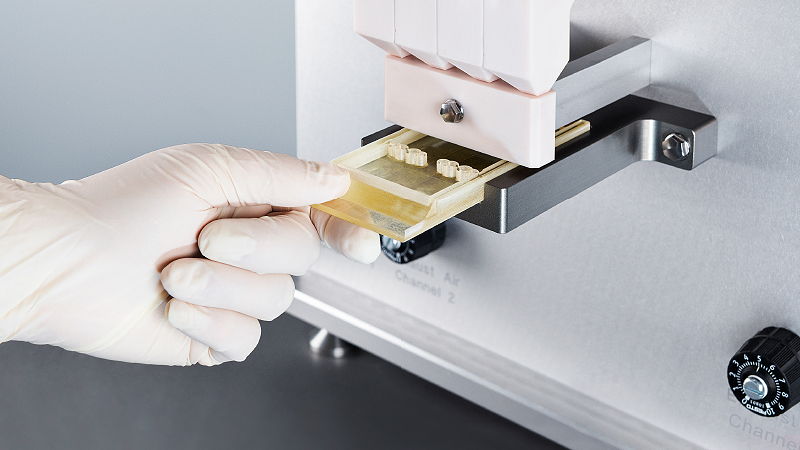Small, round, freeze-dried. That is how lyo beads – also known as cryo pellets – can be described. While the beads are rather inconspicuous, they nevertheless provide almost unlimited possibilities. Dieter Haberzettl, Director of the Diagnostic Technologies division at Harro Höfliger: “The field of application depends entirely on the starting material. Many beads are sized between 1.8 mm and 6 mm.
They are produced using a dripping or spraying process, flash frozen (for example with liquid nitrogen) and subsequently freeze-dried. They are used, for example, in various rapid diagnostic tests. The smaller microspheres, lyophilized pellets with a diameter of up to 0.5 mm, are primarily used in the life sciences sector. The advantage lies in the storage stability of the active ingredients at room temperature.”

The Lyo Bead Dispenser TT precisely doses lyophilized beads into different containers.
But the excellent stability of the beads is not their only strength, explains the expert: “They are easy to store and transport in bulk, which further simplifies logistical processes. In addition, the production chain for rapid tests does not have to be interrupted. There is no drying time required, unlike when liquid reagents are being placed into the test kits.”
For companies who want to benefit from the potential of the small spheres, Harro Höfliger provides the appropriate solution. Dieter Haberzettl: “The Lyo Bead Dispenser TT is space saving, easy to operate and thus ideally suited for product development. It doses the beads individually by air flow. Unique throughout the world: The electrostatic charge is very well controllable during this process. The same principle and the same dispenser can be used later in fully automatic production.”
